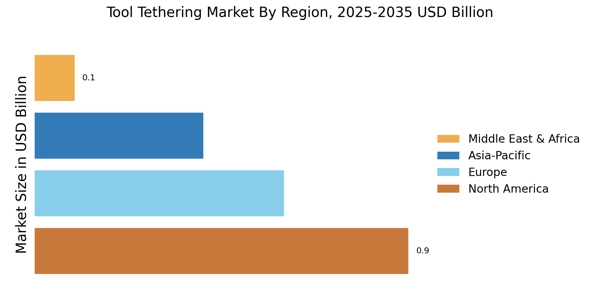Increased Regulatory Compliance
Increased regulatory compliance is a driving force in the Tool Tethering Market. Governments and regulatory bodies are implementing stricter safety standards to mitigate workplace hazards associated with dropped tools. This regulatory landscape compels organizations to adopt tool tethering solutions as a means of compliance. Data suggests that companies that invest in safety measures, including tool tethering, can reduce workplace accidents by up to 40%. As a result, the Tool Tethering Market is expected to witness a rise in adoption rates as businesses prioritize compliance and safety, thereby enhancing their operational efficiency.
Rising Demand for Safety Equipment
The Tool Tethering Market experiences a notable increase in demand for safety equipment across various sectors. As organizations prioritize employee safety, the adoption of tool tethering solutions becomes essential to prevent accidents and injuries caused by dropped tools. According to recent data, the market for safety equipment is projected to grow at a compound annual growth rate of 5.2% over the next five years. This growth is driven by stringent safety regulations and a heightened awareness of workplace hazards. Consequently, the Tool Tethering Market is likely to benefit from this trend, as companies seek to enhance safety protocols and reduce liability risks associated with tool-related incidents.
Growing Awareness of Workplace Safety
Growing awareness of workplace safety is a crucial driver for the Tool Tethering Market. As employees and employers alike recognize the importance of maintaining a safe working environment, the demand for tool tethering solutions is likely to increase. Educational initiatives and training programs focused on safety practices are contributing to this heightened awareness. Market analysis indicates that organizations that implement safety measures, including tool tethering, experience a 25% reduction in tool-related accidents. This trend suggests that the Tool Tethering Market will continue to expand as companies invest in solutions that promote safety and protect their workforce.
Technological Advancements in Tool Tethering
Technological advancements play a pivotal role in shaping the Tool Tethering Market. Innovations such as smart tethering systems, which utilize IoT technology, are gaining traction. These systems offer real-time monitoring and alerts, enhancing the efficiency and effectiveness of tool management. The integration of advanced materials, such as lightweight and durable composites, further improves the usability of tethering solutions. Market data indicates that the adoption of smart technology in tool tethering is expected to increase by 30% in the next three years. This trend suggests that the Tool Tethering Market is on the cusp of a technological revolution, potentially transforming how tools are secured and managed in various work environments.
Growth in Construction and Manufacturing Sectors
The Tool Tethering Market is significantly influenced by the growth in the construction and manufacturing sectors. As these industries expand, the need for efficient and safe tool management becomes increasingly critical. The construction sector alone is projected to grow by 4.5% annually, leading to a higher demand for tethering solutions that ensure tools are securely fastened and easily accessible. This growth is further supported by the rising number of construction projects and manufacturing activities worldwide. Consequently, the Tool Tethering Market is likely to see a surge in demand as companies strive to enhance productivity while maintaining safety standards.


















Leave a Comment